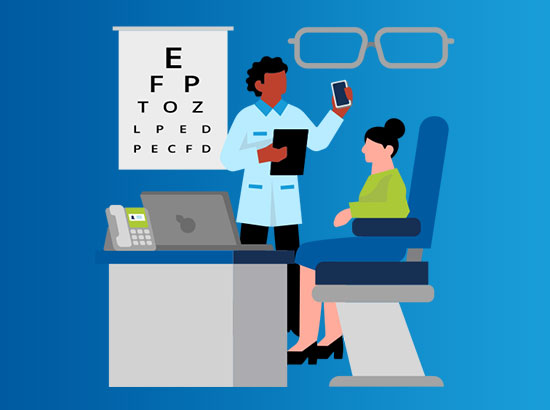What makes a good
contact center?
How seamlessly integrated systems and a culture of innovation makes for a better call center

We live in an age where emboldened by technology, customers expect instant gratification. If an organization can’t deliver on these demands, it won’t be long before the negative feedback starts piling up on consumer review websites. Microsoft’s State of Global Customer Service report found that 58% of customers consider customer service to be a very important factor in their choice of brand, while 61% will stop their business following a poor experience. Evidently, it’s imperative that your representatives are there during their time of need.
Contact centers play a critical role in customer service across every sector. For service-based companies, they represent a single point of contact for managing customer support requests and keeping up with the commitments of their service level agreements (SLAs). In healthcare, an efficiently run contact center means the difference between sickness and health. Internally, contact centers are instrumental in fostering good teamwork and collaboration, especially in the era of remote work.
The definition of a contact center, as opposed to a traditional call center, is a customer service center that supports omnichannel customer support. They’re growing in importance because customers increasingly expect organizations to support various contact methods. By taking a multichannel approach to customer service with an integrated contact center, organizations can create better customer experiences.
In this article, we’ll look at the key characteristics of a good contact center and how a unified communications (UC) infrastructure can help build one.
Seamless integration with industry-leading communication tools
A good contact center starts with the employees. If your employees are able to do their jobs without unnecessary friction, they’ll be better prepared to deliver a better customer experience. That means more continued business, a stronger brand reputation, and more revenue. But to make these things possible, it’s necessary to deliver a cohesive experience for your workers and, by extension, your customers.
An integrated approach to contact center management increases efficiency and productivity. It eliminates information silos to foster a collaborative environment. On the surface, however, that’s not an easy thing to achieve. After all, customer interactions take many different forms, such as phone calls, live webchat, text messaging, and email. On top of that are the internal communication needs, typically characterized by video conferencing platforms like Microsoft Teams or Zoom. Given such a wide range of mediums, it’s imperative that your contact center can accommodate the individual needs of employees and customers alike.
Industry-leading communications tools like Microsoft Teams are just the tip of the iceberg. It’s also necessary to support direct calling. However, this shouldn’t have to mean using dozens of different platforms just to run an effective call center. Without the right integrations, contact centers risk getting overwhelmed by so-called ‘technology bloat’, in which everyone ends up using different tools that don’t work well together. This also translates into higher costs and an increased burden on management.
Remote work adds yet another dimension to the challenges of contact center management. Increasingly distributed workforces mean the traditional call center environment is becoming obsolete. To accommodate this new mode of work, organizations must extend their operations to mobile devices as well. Furthermore, key information must be readily available to everyone on the team, hence the need for an integrated approach.
Since your contact center revolves around customer service, it stands to reason that it should integrate seamlessly with your customer relationship management (CRM) software. Whether you use Salesforce, Microsoft Dynamics, or any other industry-leading CRM, it’s essential that you choose a unified communications platform that provides complete interoperability without the need to manually enter information twice or more.
Summary: Choose a unified communications solution that works well with your existing CRM software, video conferencing platforms, and other mission-critical tools.
Extensive customizability for easy alignment with your needs
Like a lot of software-based solutions, contact center platforms are often one-size-fits-all and thus lack flexibility to adapt fully to the unique needs of individual organizations. While they might still provide an aesthetically pleasing and modern user experience, it’s more important that they can be customized to suit your particular environment. For example, a contact center for a healthcare provider has very different needs to one that provides customer service in the managed IT services sector. As such, it’s important that you can pick and choose the features and functions you need.
Modern contact centers must be flexible and able to respond quickly to changes in customer behavior. This is something legacy models severely lack, as anyone who has picked up the phone only to be pushed around from one automated response to the next has experienced first-hand. Fortunately, cloud-hosted contact center platforms can now offer an even greater degree of configurability to far costlier bespoke on-premises solutions.
Flexibility is the overarching goal of customizing any contact center. Customer needs change and evolve all the time, so the last thing you want to do is implement a solution that will soon become obsolete. A good contact center is one that can keep up with new channels, modes of interaction, and varying customer preferences. This is where having a dependable cloud-hosted and managed service can really shine. Managed services have a vested interest in keeping up with the latest trends and developments in the technology space, so they regularly update their platforms and add new features.
A customizable contact center also enables better scalability. Over the past year, due to the ongoing coronavirus pandemic, many industries have seen their calling capacities swamped with requests. With many call centers being overloaded by high volumes of calls and long waiting times, there’s a growing need to accommodate a wider range of communication channels. For example, if the lines are busy, customers should be able to open a ticket via the website. It’s also important to customize call queues so your employees can respond to the most urgent calls first, and you can keep wait-on-hold times to a minimum.
Interactive voice response (IVR) systems and routing customization can also help reduce the burden on contact center operations. IVR should be prioritized to deliver a smooth self-service experience to customers whose requests don’t require them to actually speak to someone in person. At the same time, urgent requests should be automatically prioritized and routed to the right department, employee, or device.
SMS notification via IVR is one effective way to eliminate the need for multiple interactions between customers and agents. This can allow users to tap or dial designated buttons or numbers to receive automated responses, answers, SMS messages, web addresses, or request callbacks.
Summary: Always prioritize customizability when choosing a contact center platform, so that you can adapt quickly to accommodate evolving demands.
Comprehensive insights with sentiment analysis and reports
The best contact centers are those that promote continuous improvement and innovation. This can be achieved with a combination of comprehensive analytics and a continuous feedback loop. Contact center managers need a clear view of their operations moment-by-moment, with real-time and historical data visualizations. This will allow them to make timely decisions based on facts rather than emotions.
Contact center analytics track interactions to identify trends and drive improved performance. They can also help managers pinpoint the root cause of various issues, such as unanswered calls or long waiting times. Converting these interactions into a consistent format for analytics provides readily available insights that can help in every area of managing a call center from employee coaching to ensuring compliance with company policy.
The great thing about omnichannel contact centers is that they provide visibility into the entire customer journey. By curating interactions across the full range of mediums the organization uses to engage its customers, it’s possible to get a bird’s eye view of the process and, in doing so, identify opportunities for improvement. This applies to any sector, whether it’s about enabling better patient outcomes in healthcare or nurturing B2B prospects and clients across long-term contracts.
While every digital interaction generates actionable data, business intelligence (AI) introduces a whole new dimension to analytics and insights. AI is the tech behind sentiment analysis, a powerful solution that lets you hone in on customer opinions and emotions. It uses keyword-based analyses to gauge everything from product interest to customer satisfaction to market trends. With sentiment analysis, you can systematically identify, extract, and quantify essential information on a level that’s impossible with conventional analytics. Moreover, since sentiment analysis works at machine speed, you’ll have access to data when it’s most relevant, giving you the opportunity to make informed decisions faster.
Summary: To get a clear picture of the effectiveness of your operations, you need a contact center that provides comprehensive data analytics and customer sentiment analysis.
How can our Smart Contact Center help?
The Smart Contact Center by SmartChoice is a fully integrated, centralized platform for managing customer interactions across multiple channels. Our solution provides seamless communication via live chat, direct phone calls, SMS messaging, and popular video conferencing and online calling platforms like Microsoft Teams and Zoom.
Our goal is to remove digital barriers, break down the information silos, and empower you to give your customers the experience they demand and deserve. That’s why the Smart Contact Center comes with white-glove support, limitless customizability, and comprehensive analytics powered by business intelligence.
SmartChoice is a technology company based out of New York City with a unique portfolio of solutions including UCAAS, collaboration, software and analytics, dedicated contact centers, security, infrastructure, and managed connectivity. Through its unsurpassed white-glove service and 24x7x365 U.S. based support, it has grown to become one of the largest award-winning PBX/SIP providers in North America.



